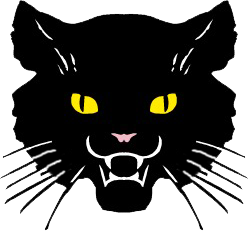Beginning Basics:
Language Arts:
-Noting details -Making predictions -Compare/Contrast -Initial Consonants -Table of Contents -Categorize/Classify -Drawing Conclusions -Sequence -Final Consonants -Glossary (ABC order) -Summarizing -Noting Details -Making Generalizations
-Clusters with r,l,s -Following Directions -Cause and Effect -Digraphs ch, sh, th -Inferences: Making Predictions & Drawing Conclusions -Short a, e, o -Writing clear and complete sentences -Fantasy/Realism -Short i, u -Double final consonants -Sentences to answer questions -Reading a Map -Nouns -Noting Details -Long vowels CVCe: a,i,o -Story Structure and Summarizing -Long a,i,o,u -Writing clearly with naming words -Making Generalizations -Write clearly with describing words -Adjectives -Vowel pairs: ee,ea,oa,ow,ai,ay -Sounds for y -Vowel Pairs: oo,ew,ue,ou -Base words and Endings: -s,--ing,-ed,-er,-est,-ly,-ful,-y -Verbs -Write sentences with I, me -Glossary (spelling/meaning) -Text Organization and Summarizing -Base words and endings –r -Controlled Vowels -Writing clearly with action words -Plurals with –es -Subject/Verb agreement -Contractions
Math:
Addition Subtraction Concepts: -Write numerals for sets up to 100. -Write in words whole numbers through 20. -Recognize that the equals sign (=) indicates that the quantities on each side are equivalents. -Single and Double Digit Problems
Data and Graphing: -Use number line from 0 to 180. -Solve words problems with sums to 18. -Identify inverse relationships between addition/subtraction facts (fact families). -Pose/answer questions about charts/graphs relating to familiar experiences.
-Use organized data to construct picture, object, and bar graphs.
Numbers and Patterns to 100: -Sequence random numerals. -Use numerical patterns to skip count by 2s, 5s, and 10s.
-Create a repeating or growing pattern. -Identify missing numerals and elements in a pattern or sequence. -Using symbols and objects, identify/create/extend a wide variety of patterns. -Use letters to represent a created pattern. – Word Problems
Time, Calendar, Money: -Tell and record time to hour and half-hour. -Complete a time sequence. -Use calendar sequence for days and months. -Determine the total value of coins. -Find money equivalencies in a given amount. -Identify the correct usage of cent symbol, dollar symbol, and decimal point.
Geometry, Fractions, and Probability: -Compare a wide variety of measurements over time. -Identify/represent ½ , 1/3 , and ¼ of a whole using concrete/pictorial models. -Interpret graphs using the vocabulary more, less, fewer, greater than, and less than.
-Identify an event as likely or unlikely to occur.
Measurement: -Use nonstandard units to measure the length of an object. -Measure the length of an object in whole inches.
-Measure the length of an object in whole centimeters. -Choose and correct measuring instrument.
Science:
Process Skills *Observe *Classify *Measure *Communicate
Life Science Plants: *Basic Needs *Parts of Plant *Seed dispersal *Growth and Development Environment *Habitats *Recycling
Earth Science: *Observation of sun, moon, and stars *Properties: sun, moon, stars *Describe changes in shadows *Phases of the moon
Physical Science: *Collect/interpret data *Comparing matter *Compare weight/size *Graphing *Forces *Simple Machines *The effect of a push or pull on an object *Patterns in the ways objects move
Inquiry: *Investigations
Health:
Mental and Emotional Health * Family and Social Health * Growth and Development * Nutrition * Personal Health and Physical Activity
Social Studies:
Time, Continuity, and Change: History - (Families: Past and Present) * Power, Authority, and Governance: Government/ Political Science * People, Places, and Environment Geography * Production, Distribution and Consumption: Economics
|
Social Development:
* Aggressive, physically and verbally.
* Tantrums.
* Contradicts.
* Calls people by name.
* Emotional.
* May get angry with failure.
* Shows opposites in behavior.
* More polite by 6 1/2 years of age.
* Friendship get stronger.
* Some rivalry. |










